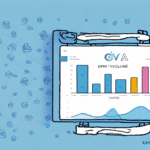Understanding and Analyzing Cart Abandonment
Cart abandonment poses a significant challenge for online retailers, where potential customers add products to their carts but leave without completing the purchase. According to Barilliance, the average cart abandonment rate across industries is nearly 70%. Understanding and analyzing the reasons behind this trend is crucial for developing effective strategies to reduce it.
Common Reasons for Cart Abandonment
- Unexpected Shipping Costs: Additional fees that appear during checkout can deter customers.
- Complicated Checkout Process: Lengthy forms and multiple steps can frustrate users.
- Security Concerns: Lack of trust in website security can prevent customers from completing purchases.
- Limited Payment Options: Customers may abandon carts if their preferred payment method isn't available.
Analyzing Cart Abandonment Data
To effectively address cart abandonment, it's essential to analyze relevant data. Utilize tools like Google Analytics to monitor website traffic, track user behavior, and identify patterns. Key metrics to focus on include:
- Abandonment Rate: Percentage of carts abandoned versus those completed.
- Checkout Funnel Analysis: Identify at which step customers are dropping off.
- User Behavior: Understand how customers navigate your site and interact with products.
Enhancing Trust and Customer Confidence
Building trust with your customers is fundamental to reducing cart abandonment. When customers feel confident in your website's reliability and security, they're more likely to complete their purchases.
Implementing Security Measures
Ensure your website uses HTTPS encryption and displays trusted security badges from providers like SSL. Clearly communicate your security practices to reassure customers.
Displaying Customer Reviews and Social Proof
Incorporate genuine customer reviews and testimonials to demonstrate product quality and customer satisfaction. Platforms like Trustpilot can be integrated to showcase authentic feedback.
Transparent Business Practices
Be open about your business operations, including sourcing, manufacturing processes, and return policies. Transparent practices foster trust and encourage repeat business.
Streamlining the Checkout Process
A smooth and efficient checkout process is vital for minimizing cart abandonment. Simplifying each step can significantly enhance the user experience and boost conversion rates.
Guest Checkout Options
Allow customers to make purchases without creating an account. Guest checkout reduces friction and speeds up the purchasing process. However, always provide the option to create an account for those who prefer it.
Optimizing for Mobile Devices
With mobile commerce on the rise, ensure your checkout process is fully optimized for mobile users. Responsive design, large input fields, and easy navigation are essential for a seamless mobile experience.
Reducing Form Fields
Minimize the number of required fields during checkout. Only request essential information to expedite the process and reduce the likelihood of abandonment.
Expanding Payment Options
Offering a variety of payment methods can cater to diverse customer preferences and increase the likelihood of completing a purchase.
Integrating Popular Payment Gateways
Include widely used payment options such as PayPal, credit and debit cards, and digital wallets like Apple Pay and Google Pay to accommodate different user preferences.
Offering Installment Plans
Providing flexible payment solutions, such as installment plans through services like Klarna, can make higher-priced items more accessible and encourage purchases.
Leveraging Urgency and Scarcity Tactics
Creating a sense of urgency or scarcity can motivate customers to complete their purchases promptly.
Limited-Time Offers
Implement promotions that are available for a short duration, such as “24-hour flash sales” or “limited-time discounts”, to encourage immediate action.
Stock Availability Notifications
Display real-time stock levels or notifications like “Only 3 left in stock” to create a sense of scarcity and prompt quicker decisions.
Providing Exceptional Customer Service
High-quality customer service can enhance the shopping experience and reduce cart abandonment by addressing customer concerns effectively.
Multiple Communication Channels
Offer various support channels, including live chat, email, and phone support, to make it easy for customers to reach out with questions or issues.
Responsive and Empathetic Support
Ensure your customer service team responds promptly and handles inquiries with empathy and understanding, fostering a positive relationship with your customers.
Implementing Remarketing and Email Strategies
Remarketing and targeted email campaigns are effective methods to re-engage customers who have abandoned their carts.
Personalized Remarketing Ads
Use platforms like Google Ads and Facebook Ads to display personalized product ads to users who have previously visited your site but did not complete a purchase.
Abandoned Cart Email Campaigns
Send timely and personalized emails reminding customers of their abandoned carts. Include incentives such as discount codes or free shipping offers to encourage them to return and complete their purchase.
Optimizing Email Timing
Experiment with different email timing strategies to determine the most effective schedule for your audience. Typically, sending the first reminder within an hour of abandonment and follow-ups within 24 and 48 hours can yield positive results.
Continuous Improvement through A/B Testing and Measurement
Ongoing optimization is key to maintaining low cart abandonment rates and high conversion rates.
Conducting A/B Tests
Regularly perform A/B tests on various elements of your checkout process, such as button colors, call-to-action text, form layouts, and page designs, to identify what works best for your audience.
Monitoring Key Metrics
Track essential metrics like conversion rates, bounce rates, and average order value using tools like Google Analytics. Use these insights to make informed decisions and refine your strategies.
Implementing Feedback Loops
Collect customer feedback through surveys or feedback forms to understand their pain points and areas for improvement. Use this feedback to enhance the overall shopping experience.
Measuring Success and Adapting Your Strategy
To ensure your strategies are effective, regularly measure their impact and be prepared to adapt based on what the data reveals.
Setting Clear Goals
Define specific, measurable goals such as reducing the cart abandonment rate by a certain percentage or increasing the overall conversion rate. Clear objectives help in assessing the effectiveness of your strategies.
Analyzing Performance Data
Regularly review performance data to identify trends and assess whether your implemented strategies are achieving the desired outcomes.
Adjusting Strategies Based on Insights
Be flexible and willing to adjust your approach based on the insights gained from data analysis and customer feedback. Continuous adaptation is essential for long-term success.
By implementing these comprehensive strategies, you can effectively decrease your cart abandonment rate and significantly increase your profits. Focus on understanding your customers, enhancing their shopping experience, and continuously optimizing your processes to achieve sustained growth.




















